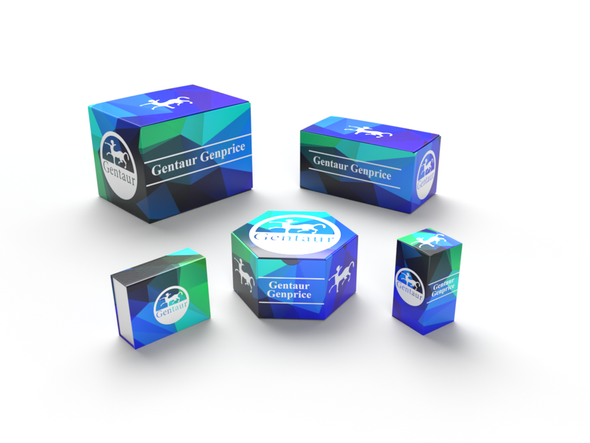740
Human Sestrin-3 (SESN3) ELISA Kit | AE19960HU
- SKU:
- 740-AE19960HU
- Availability:
- Usually ships in 5 working days
Description
Human Sestrin-3 (SESN3) ELISA Kit | AE19960HU | Gentaur UK, US & Europe Distribution
Species Reactivity: Human (Homo sapiens)
Abbreviation: SESN3
Alternative Name: MGC29667; SEST3;
Application: ELISA
Range: 0.156-10 ng/mL
Sensitivity: 0.058 ng/mL
Intra-Assay: ≤5.6%
Inter-Assay: ≤7.7%
Recovery: 0, 9
Sample Type: Serum, Plasma, Other biological fluids
Detection Method: Sandwich
Analysis Method : Quantitive
Test Principale: This assay employs a two-site sandwich ELISA to quantitate SESN3 in samples. An antibody specific for SESN3 has been pre-coated onto a microplate. Standards and samples are pipetted into the wells and anySESN3 present is bound by the immobilized antibody. After removing any unbound substances, a biotin-conjugated antibody specific for SESN3 is added to the wells. After washing, Streptavidin conjugated Horseradish Peroxidase (HRP) is added to the wells. Following a wash to remove any unbound avidin-enzyme reagent, a substrate solution is added to the wells and color develops in proportion to the amount of SESN3 bound in the initial step. The color development is stopped and the intensity of the color is measured.
Product Overview: By database mining, Peeters et al. (2003) identified a gene family related to p53-activated gene-26 (PA26), which they termed the sestrin family. Sequence alignment of human and mouse sestrin protein family members showed that the gene family is highly conserved. The SEST3 gene encodes a deduced 492-amino acid protein. Using FISH, Peeters et al. (2003) confirmed the localization of the human sestrin genes PA26, SEST2, and SEST3 to chromosomes 6q21, 1p35.3, and 11q21, respectively. Using the same method, they mapped the mouse Pa26, Sest2, and Sest3 genes to syntenic regions on chromosomes 4, 9, and 10, respectively.
Stability: The stability of ELISA kit is determined by the loss rate of activity. The loss rate of this kit is less than 5% within the expiration date under appropriate storage condition. The loss rate was determined by accelerated thermal degradation test. Keep the kit at 37°C for 4 and 7 days, and compare O.D.values of the kit kept at 37°C with that of at recommended temperature. (referring from China Biological Products Standard, which was calculated by the Arrhenius equation. For ELISA kit, 4 days storage at 37°C can be considered as 6 months at 2 - 8°C, which means 7 days at 37°C equaling 12 months at 2 - 8°C) .






